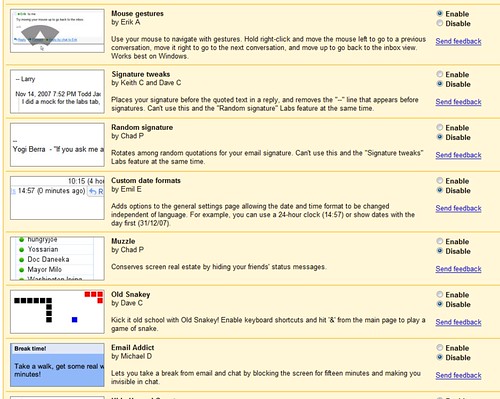I think a lot about how organizations and their products evolve quickly rather than remain static, and Google Labs are a prime example of that. By developing many alpha products, releasing several public betas, and getting live feedback they use the market to tell them what works. For many companies the notion of releasing your proprietary ideas is very scary, and yet the effect is the opposite: risk management.
A colleague just gave me a heads up to the Labs section of Gmail (accessible from Settings). It’s interesting for a few reasons:
- They’ve turned the labs upside down, embedding experimental ideas as preferences in an application rather than silo’d sites.
- Each feature is attributed to the employee(s) who invented it, acknowledging that great experiments often originate with one person, even if it takes a company to implement it.
- Some of the features — like “mouse gestures” which lets you navigate conversations by moving the mouse — innovate at the user interface level.


